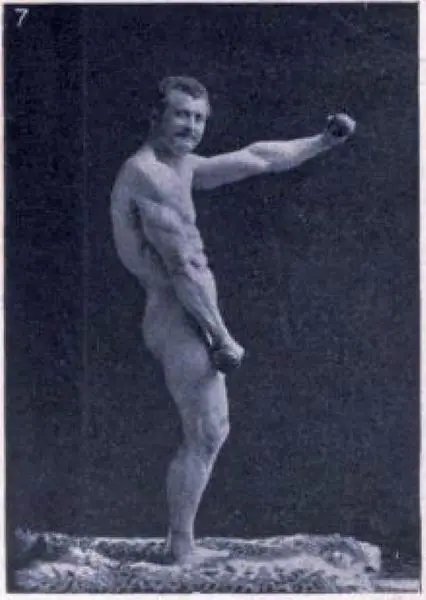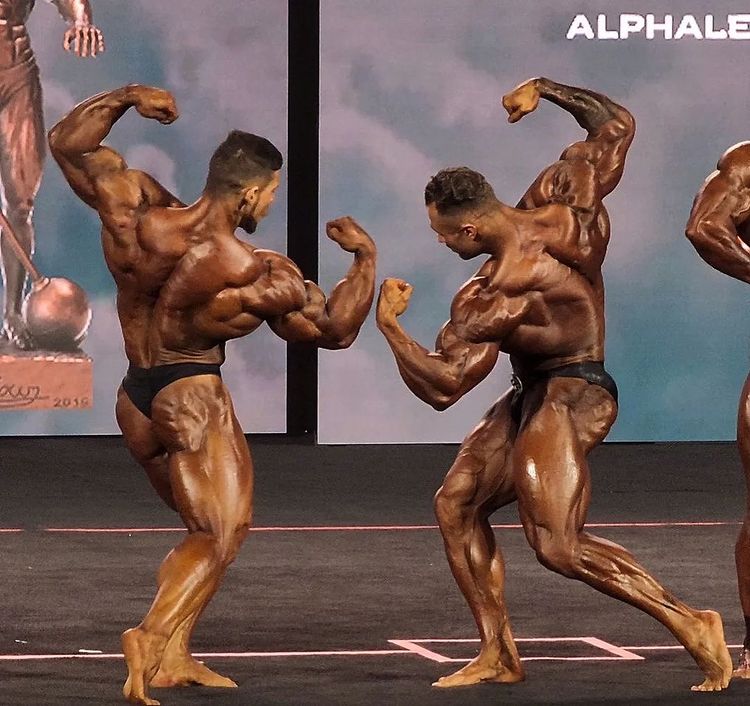Strength training has been a part of most cultures since time immemorial.
While the exact dates and origin of physical culture are still unknown, most historians agree that strength training started gaining traction worldwide around the same time.
Stone lifting is among the earliest forms of strength training and is still revered in many countries, including Iceland, Scotland, and the Basque country.
Weight training has evolved over the years, and so have the physiques.
Humans initially started lifting weights to get stronger. The objective later shifted to crafting the ‘perfect’ physique before professional bodybuilders started testing the limits of the human body.
In this article, I will take you over the genesis of bodybuilding and how it transformed into the sport we know today.
Level Up Your Fitness: Join our 💪 strong community in Fitness Volt Newsletter. Get daily inspiration, expert-backed workouts, nutrition tips, the latest in strength sports, and the support you need to reach your goals. Subscribe for free!
We’ll explore bodybuilding’s rich history and evolution from the bronze, silver, golden, and subsequent eras, marked by iconic figures and shifting physique ideals.
We have a lot to cover, so grab your protein shake and sit tight.
Bronze Era (1894–1939)
The bronze era of bodybuilding began with Eugen Sandow, often hailed as the “Father of Modern Bodybuilding.”
Sandow was born in Prussia (now Germany). He left Prussia in 1885 to avoid military service and traveled throughout Europe, where he became a circus athlete to showcase his strength.
Later, in Brussels, he met a fellow strongman, Ludwig Durlacher, who mentored and coached him in strongman training. In 1889, Durlacher encouraged Sandow to travel to London to compete in strongman competitions. Sandow defeated the reigning strongman champ at that competition, bringing him instant fame and recognition.
In 1894, Sandow starred in a short film series where he was seen flexing his bulging muscles. The same year, Sandow gave one of his “muscle display performances” in San Francisco, earning him global stardom.
In 1898, Sandow started a monthly periodical originally titled Physical Culture. Between 1897 and 1904, Sandow published a series of books that coined the term ‘bodybuilding.’
A sport was hence born.
Sandow understood the power of presentation and posed under spotlights to reveal his physique’s details.
Sandow organized the world’s first major bodybuilding show in 1901 in London’s Royal Albert Hall. The Hall, which has a seating capacity of 5,272, was so full that people had to be turned away from the entrance.
The show was judged by Sandow, Sir Charles Lawes (sculptor and athlete), and Sir Arthur Conan Doyle (author of Sherlock Holmes).
Snadow developed the “The Grecian Ideal” formula for the “perfect physique” by measuring Greek and Roman statues in museums. He then developed his physique to the exact proportions.
In his books Strength and How to Obtain It (1897) and Sandow’s System of Physical Training (1897), Sandow prescribed specific weights and repetitions to achieve his ideal proportions.
Key Takeaways from the Bronze Era
- Sandow laid the foundation for posing routines and stage presentations seen in competitions today.
- In the bronze era, lifters pivoted from lifting for building strength to improving their physique aesthetics.
- Sandow was the first bodybuilder to capitalize on his fame and begin selling training and nutrition programs, equipment, and even merchandise.
Silver Era (1940–1959)
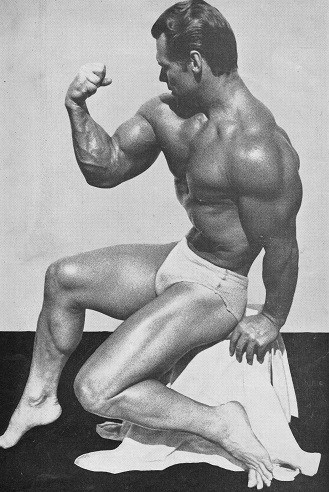
Sandow passed away in 1925 at the age of 58. After his passing, bodybuilding’s popularity took a hit.
John Grimek became bodybuilding’s Renaissance man. Thanks to his sheer muscle size and incredibly chiseled physique, Grimek won the Mr. America title in 1940 and 1941 and the Mr. Universe title in 1948.
Grimek won his last bodybuilding competition, the AAU Mr. USA, in 1949, beating bodybuilding legend Steeve Reeves.
Grimek was a weightlifter turned bodybuilder. He represented the US in weightlifting at the 1936 Olympic Games in Berlin, taking ninth place in the men’s heavyweight category.
Grimek popularized balancing training for strength and hypertrophy.
“The Monarch of Muscledom” possessed never-seen-before muscle definition, symmetry, size, and balance, which helped him retire from pro bodybuilding undefeated. He pioneered the coveted X-frame, which involves broad shoulders, a tiny waist, and sprawling quad sweeps.
Grimek relied on compound lifts, such as squats, deadlifts, and bench and overhead presses, to build his physique.
The silver era also witnessed improvements in training equipment. Better-quality barbells, weight plates, and dumbbells made training safer and allowed athletes to add variety to their exercise regimen.
This era also saw a growth in bodybuilding publications. Grimek was a prolific writer and served as the editor of the famed magazine Muscular Development for a long time.
Key Takeaways from the Silver Era
- Although the sport of bodybuilding found its lost footing in this era, it was still far from going mainstream.
- The number of bodybuilding competitions dipped in this era, and bodybuilding was predominantly a tight-knit cult.
- Lifters in the bronze and silver era did things based on experience and gut feelings. There was no solid science to back their training or nutrition.
- Quality bodybuilding gyms were sparse. Silver-era bodybuilders usually trained in their garage gyms with minimal equipment.
- The bronze era was the discovery stage, whereas the silver era was the foundation age. These eras combined helped bodybuilders determine what they needed to focus on to take their physique to the next level.
Golden Era (1960–1983)

The golden era of bodybuilding stands out as arguably the most celebrated period in the industry’s history.
Sandow was the star of the bronze era, the silver era had Grimek, and the golden era was dominated by Arnold Schwarzenegger, who helped take bodybuilding mainstream.
Two other factors led to the rise of bodybuilding in this era — anabolic steroids and a cult-classic documentary, Pumping Iron (1977).
Although the bronze and silver eras were more or less a one-man show, multiple bodybuilders led the charge in the golden era, including Schwarzenegger, Frank Zane, Franco Columbu, Lou Ferrigno, Mike Mentzer, and Robby Robinson.
Level Up Your Fitness: Join our 💪 strong community in Fitness Volt Newsletter. Get daily inspiration, expert-backed workouts, nutrition tips, the latest in strength sports, and the support you need to reach your goals. Subscribe for free!
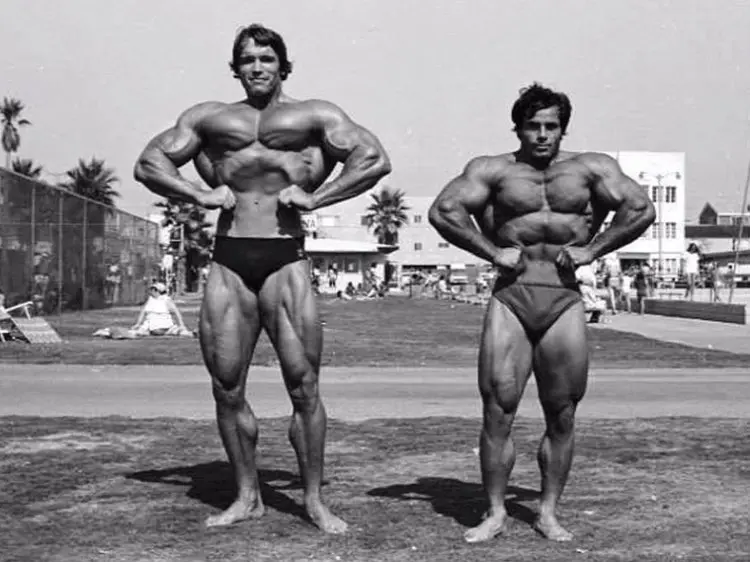
This meant two things. Bodybuilding fans had multiple idols and physiques they could work toward.
Schwarzenegger’s fans gunned for the more muscular and outlandish physique, whereas Zane’s followers emphasized a leaner, more symmetrical, and shredded body. This rivalry (and camaraderie) among bodybuilders also boosted the popularity of bodybuilding shows.
The golden era had a lasting influence on the standards and ideals of bodybuilding, which the sport still admires and strives to bring back.
Anabolic Steroids
The introduction of steroids helped bodybuilders gain muscle size, which was previously considered impossible. Much consideration was also placed on symmetry and proportions to build an aesthetically appealing physique.
Performance-enhancing drugs (PEDs) changed the complete trajectory of the sport of bodybuilding.
Although other sports and federations started drug testing their athletes, pro-bodybuilding federations stayed away from them.
The golden era also witnessed a big boost in nutritional supplements and the growth of gyms and modern training equipment. The development of new tools and techniques helped bodybuilders take their physiques to the next level.
Although this era saw the introduction of PEDs, supplements, and modern machines, one cannot take away from the dedication of the athletes.
Key Takeaways from the Golden Era
- The bodybuilders’ physique grew bigger with each era.
- Golden-era bodybuilders emphasized posing, which helped establish it as an art, science, and sport.
- Schwarzenegger started delivering blockbuster Hollywood movies in the 1980s, which helped bodybuilding make its way into living rooms across the world, turning it from a niche activity into a global phenomenon.
Haney Era (1984–1991)
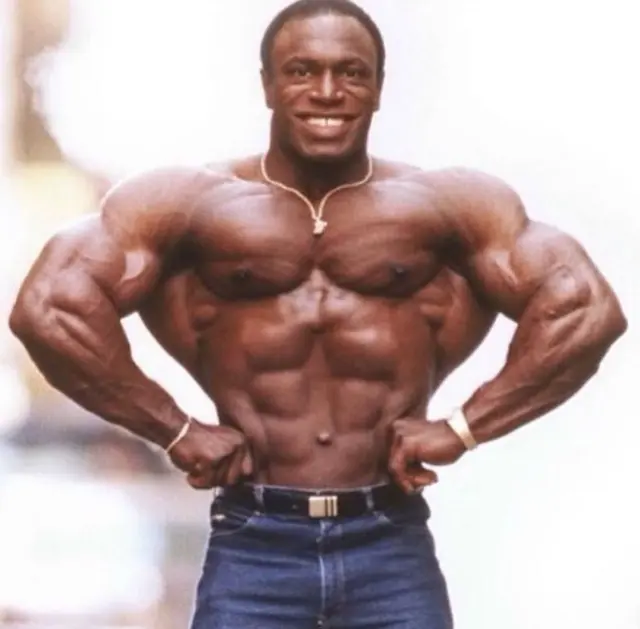
After Schwarzenegger hung up his posing trunks in 1975 after winning his sixth consecutive Mr. Olympia title, the Olympia throne was a game of musical chairs. (Arnold would return and win his seventh Olympia title in 1980.)
Lee Haney dominated the Olympia lineup in 1984 to win his first Sandow trophy. His sheer size, balance, symmetry, and conditioning helped him reign on the Olympia throne for eight straight years, making him the winningest Olympia champion of all time in the Men’s divisions. Ronnie Coleman would later match his record in 2005.
Haney had the size of Schwarzenegger and the conditioning of Frank Zane. Only a few bodybuilders of his size could hit the vacuum pose.
Although Haney was pushing the envelope, his competition wasn’t far behind.
Rich Gaspari, Lee Labrada, and Shawn Ray were among Haney’s most formidable challengers. While these bodybuilders were of smaller stature, their muscle density, lines, separations, and conditioning propelled them toward the front of the pack.
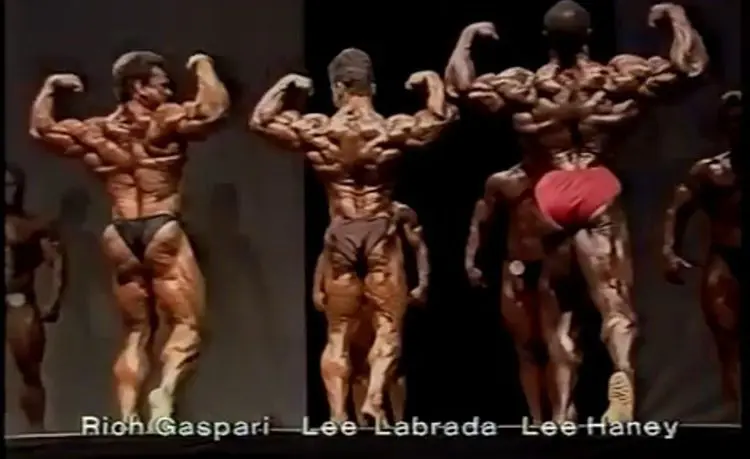
Key Takeaways from the Haney Era
- Although the bodybuilders were getting bigger, the importance of aesthetics wasn’t lost.
- Bodybuilders like Gaspari, Labrada, and Ray had shown that smaller bodybuilders could take on the Titans.
- Most people refer to Haney’s era as the bridge between the golden and the mass monster era.
The Mass Monster Era (1992–Present)
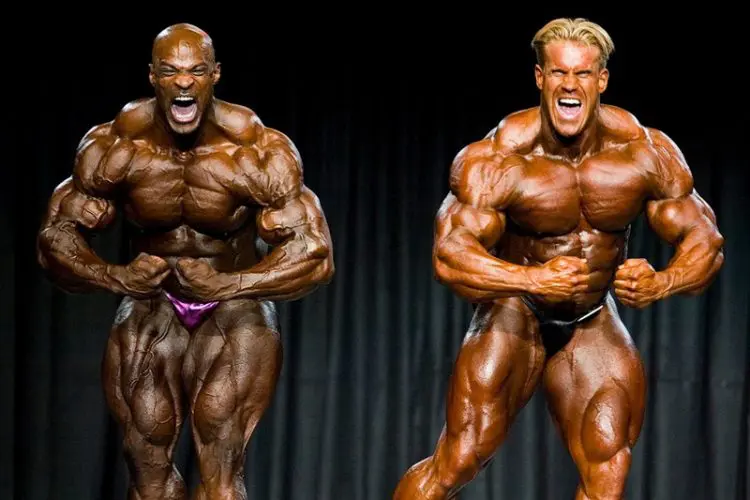
There was a gap between Schwarzenegger’s and Haney’s reigns. However, that was not the case for Haney and Yates’ reigns.
Haney retired from competitive bodybuilding in 1991 after winning his eighth Olympia title. Dorian Yates won his maiden Sandow trophy in 1992 and held onto it until 1997.
Yates took what Haney had started to the next level. When he stepped onto the Olympia stage in 1991, he was the biggest bodybuilder anyone had ever seen. In his maiden Olympia outing, he finished runner-up behind Haney.
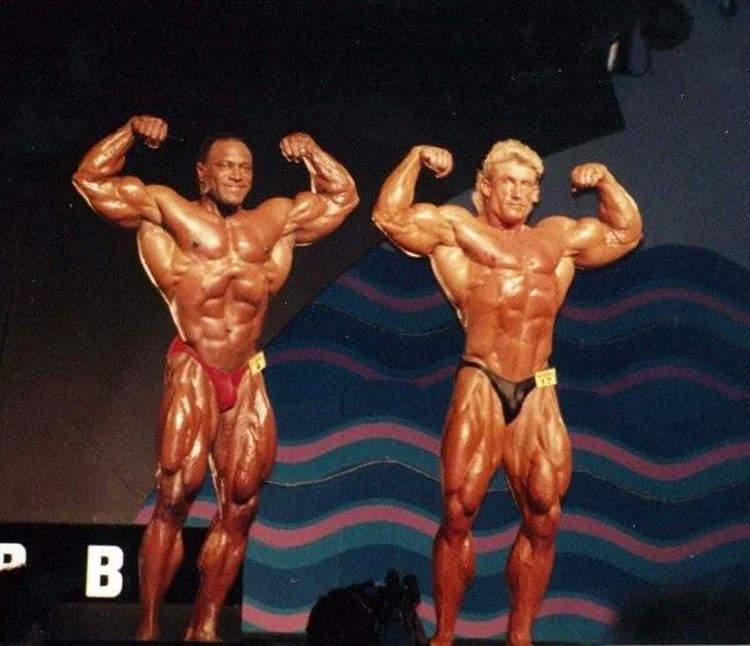
Yates’ dry and grainy physique set new muscle definition and conditioning standards. The Brit’s paper-thin skin allowed an unprecedented view of each muscle fiber as he transitioned between poses.
Just when the bodybuilding fraternity thought Yates’ had discovered the human body’s limit, we saw Ronnie Coleman’s emergence. Coleman went from a ninth-place finish at the 1997 Olympia to winning eight consecutive Olympia titles between 1998 and 2005.
If the bronze, silver, and golden eras were about building Greek god physiques, the mass monster era is about pushing the limits of the human form. It involves packing on mass so extreme it seemed almost superhuman.
Controversies Surrounding the Mass Monster Era
In the quest to get bigger and stronger, many bodybuilders started abusing PEDs.
Many pro bodybuilders, including Dallas McCarver, Mike Mentzer, Mike Matarazzo, and Greg Kovacs, died of heart attacks due to alleged steroid use. This raised questions about the long-term health costs of using PEDs and bodybuilding in general.
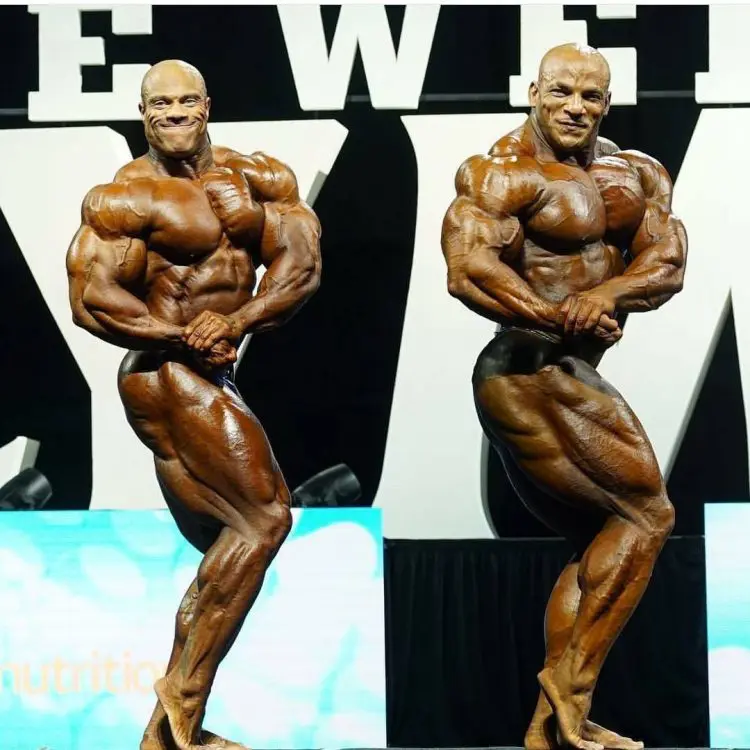
Key Takeaways from the Mass Monster Era
- Size reigns supreme. After Phil Heath won seven consecutive Olympia titles, many believed the mass monster era had come to an end. However, that changed when Mamdouh “Big Ramy” Elssbiay won back-to-back titles in 2020 and 2021.
- It is now common for bodybuilders to whey over 300 pounds.
- This era opened debates about the health consequences of getting so big and using PEDs.
- Bodybuilding legends dissed Men’s Open bodybuilders for their extended guts and lack of symmetry and proportions.
- With former 212 division bodybuilders Hadi Choopan (2022) and Derek Lunsford (2023) winning the Mr. Olympia title, the pendulum might be swinging back slightly.
- However, size will always be the king in the Men’s Open division.
Classic Physique Era (2010s-Present)

With the growth of the mass monster era, many opined that bodybuilders were sacrificing aesthetics while trying to get as big as possible.
Bodybuilding legends, including Arnold Schwarzenegger, demanded an intervention from the IFBB Pro League, the world’s biggest professional bodybuilding organization.
The IFBB Pro League responded by introducing the Men’s Physique division in 2012. It was “aimed at men who prefer to develop a less muscular, yet athletic and aesthetically pleasing physique.”
Men’s Physique bodybuilders wear board shorts on stage and their posing routine comprises quarter turns.
The IFBB Pro League introduced the Classic Physique division in 2016. This division involves weight and height classes and bridges the gap between the Men’s Physique and Men’s Open divisions.
The division aims to revive the ideals of the golden era of bodybuilding by focusing on symmetry, proportions, and conditioning.
Classic Physique bodybuilders focus on the V-taper, proportions, conditioning, and posing.
Key Takeaways from the Classic Physique Era
- The Classic Physique division is slowly gaining traction, and many believe it will replace the Men’s Open division as the premiere bodybuilding division.
- Classic Physique Olympia champ Chris Bumstead is arguably the most popular bodybuilder in the world in the 2020s.
- The Classic Physique division represents a full-circle moment in bodybuilding.
Conclusion
Ladies and gents, this was your crash course in the history of bodybuilding. You are now in the top one percent of the population, who know how the sport has evolved over the years.
Although the golden era of bodybuilding is the most talked about in the present age, we should not forget that each phase, beginning from Sandow’s bronze era, has played a significant role in shaping the sport into what it is today.
The sport of bodybuilding is at a pivotal point, and it would be interesting to see where its evolution leads.
If you have any questions about any of the eras or would like to learn more, please post them in the comments below, and I’ll be happy to help.

